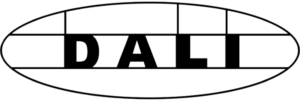Helvar 100: a story of innovation
At Helvar, we aim to create the experiences that users demand. Over our 100-year history, we have continued to innovate, creating products and components that address genuine needs in the market.
Often innovations/ideas arise from two different origins. The first are those that have been invented when creating or improving a product. These address a particular need or shortcoming – a newly identified use or are an answer to an existing customer use case. The second is more visionary- invented when someone has been thinking of how lighting should, and could, be controlled in the future—sparked by keeping eyes open: problems with existing solutions, questions without an answer, new technology in the market, etc.
All Helvar innovations start from thinking of a customer need. Present needs are relevant, but it’s essential to understand the future demands that customers might not have been able to form themselves. Innovation is always a result of a novel idea and making a commercial success based on it. It does not necessarily need to be a new product – innovation could also be a new delivery channel, new product positioning, or a new service element.
When thinking about technology-related innovations, it’s essential to acknowledge the present and near-future technological possibilities. To achieve a successful innovation, a variety of differential skills and capabilities are needed. Technology related innovations can start from an invention. However, turning an invention into an innovation requires vast prioritisation, risk-taking, willingness, and superior implementation skills. And this is true in the case of establishing Helvar innovations — several Helvarians involved, each with different capabilities and skills, each working towards a common goal.
A story of innovation
Our story started from the production of radios, moving to televisions and then progressed into the lighting field at the end of the 1940s, where Helvar began the production of ballasts for fluorescent lamps. In 1966, Helvar began producing lighting components, later expanding to include lighting control systems for theatres and conference spaces. At the beginning of the 1980s, electronic ballasts were added to the product range. Helvar developed the world’s first dimmable electronic ballast for fluorescent lamps. Electronic lighting became more important, and the demand for lighting control systems increased rapidly in the late 80s. As the demand for lighting control systems grew, Helvar acquired Electrosonic in 1990. Electrosonic’s lighting division was merged with Helvar in 1998, taking the company still one step further globally.
The adoption of DALI

The adherence to the use of open standards has been a major driver for our solutions. We have actively engaged in industry alliances to help improve and drive standards forward. Helvar is one of the founding members of the DALI Alliance, and the first company that offered a leading solution with our Digidim range of controls to support the original DALI (Digital Addressable Lighting Interface) standard. We’ve actively led the development and innovation of DALI solutions. We continued to innovate, embracing open standards, with the introduction of the 900 series of networked Lighting Routers providing truly scalable lighting systems with a rich feature set and this continues today with the introduction of the new 950 router series.
For Helvar Lighting controls and components, DALI opened an interesting innovation path. DALI ballasts and DALI lighting control systems have been at the core of our innovation since then, and Helvar has developed all different kinds of components for the DALI world.
Forerunner in adopting AI in wireless lighting
With the onset of wireless control technologies, Helvar introduced ActiveAhead, the world’s first wireless self-learning lighting control system. The development of ActiveAhead required a deep understanding of luminaire components and lighting control with the courage to create something unique. Helvar’s development of wired and wireless lighting control components and features continue to focus on wellbeing and energy savings.
The future is bright
As intelligent buildings evolve, there will be new customer demands requiring lighting control companies to innovate. In addition, increasing amounts of data will create opportunities to innovate on a “service layer”. Helvar will bring innovation on many fronts, directly impacting how customers get benefits from our solutions. Since lighting and lighting-related sensors are everywhere, it has been logical to use data to provide insights into a building’s usage and needs.
Increasing data will drive us to bring new innovative services, requiring new hardware or insights for other buildings’ systems. Artificial intelligence will make it easier to optimise conditions, not only light but all requirements such as temperature, humidity, in the spaces where people work, learn and relax. We believe innovation in lighting control will make today’s lighting control less relevant, as the conditions around us are as we want them to be from the get-go. In essence, the art of innovation in lighting control is to make lighting control more efficient but less visible.
Innovation is at the heart of what we do. It enables Helvar to offer a broader range of solutions that improve wellbeing, productivity and energy efficiency in modern buildings. Innovation provides opportunities for new business models, new hardware components, new services or novel collaboration with partners and customers. The future is bright, and we will continue innovating for the benefit of users. We can’t wait to see what the next 100 years have in store — watch this space!
